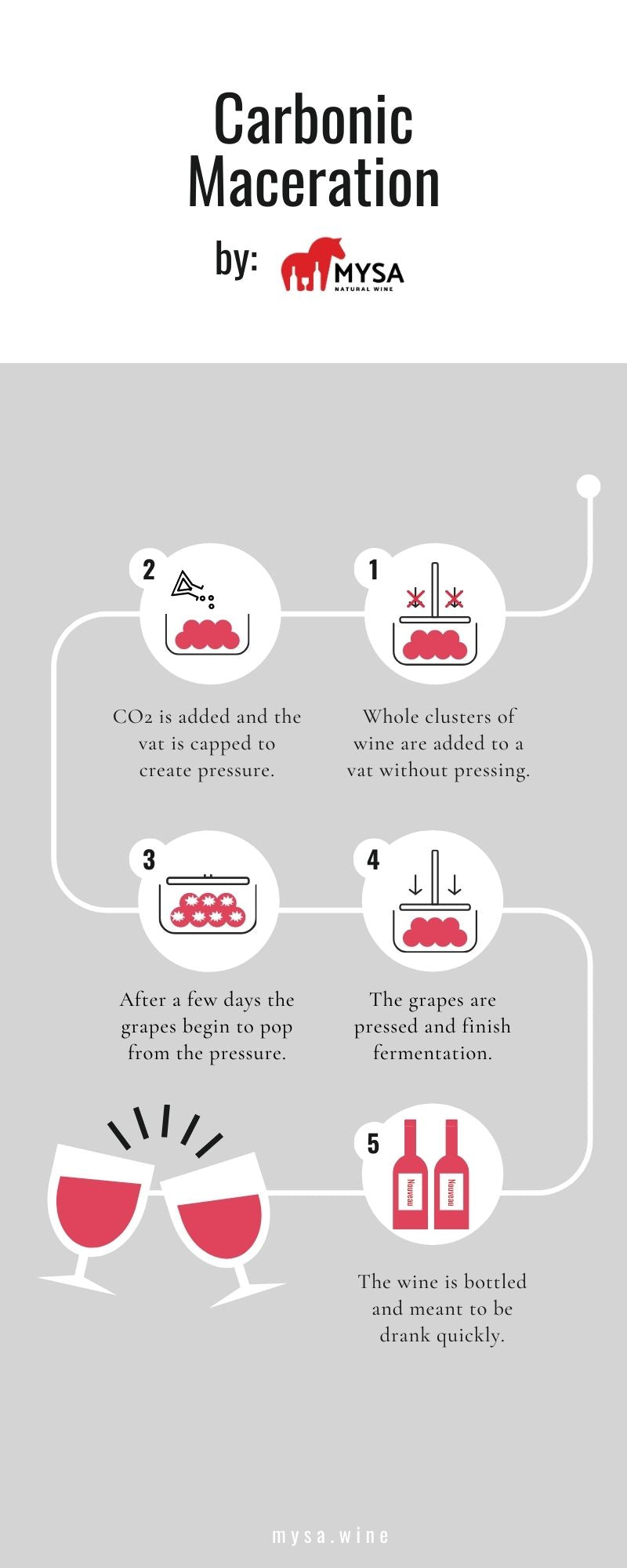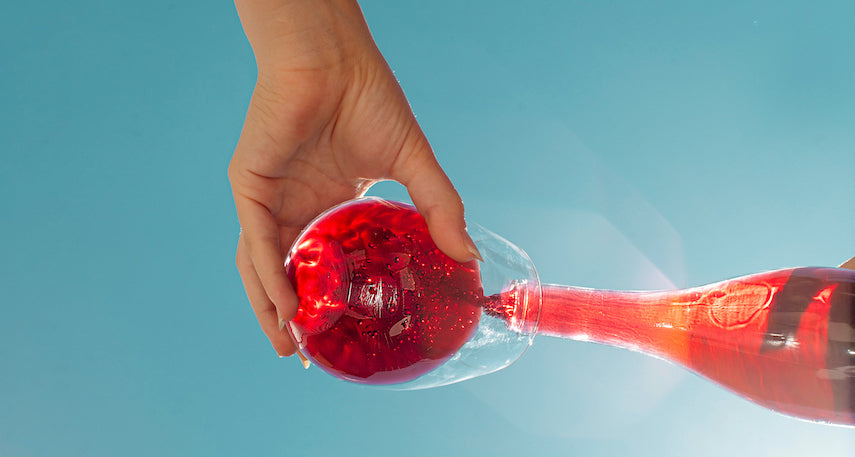Throw your hand in the air if you’re down with the vibrant, fruity red Gamay grape that makes Beaujolais Nouveau? High five because we are too. The popular Beaujolais Nouveau Day is celebrated by wine drinkers the third Thursday of every November.
What is Nouveau Wine?
The idea of nouveau in winemaking goes far beyond the Beaujolais. On a high level it is a wine that is sold the same year it is harvested. From vine to bottle to your mouth, the entire process of creating nouveau-style wines happens within a few weeks after harvest (between the end of October - December).
It’s usually light bodied and paler in color due to minimal, if any, maceration time and a short fermentation period. Another French term used to describe nouveau wines is “glou glou” because they are highly drinkable wines and typically lower in alcohol content.
History of Nouveau Wine
Our Founder, Holly Berrigan, discussing with David Large, winemaker in Beaujolais
The Nouveau movement all started in the Beaujolais, but gained popularity, as many things do, by becoming big in Japan! While Americans were drinking overly oaked Cabernet, Japan was going crazy for the fresh pink fruit bombs with fun labels coming over from France. But let's start at the beginning.
The wine started as a harvest celebration, taking a portion of the wines and creating a fresh, fruity, glou glou wine that could be drunk ASAP. The style of wine began growing in popularity across France and and ended up with a designated day which falls on the third Thursday of November (not on purpose because of Thanksgiving, but talk about a happy accident!). This is the non-official release date of the Beaujolais nouveau wine specifically.
Starting in the 1980's the wine started to be exported with it gaining major popularity across Asia, the US and other European countries like Germany. Japan is currently the largest importer of this style of wine, with the US ranking 2nd and Germany third. With the rise of natural wine and low ABV wine becoming more in vogue every year in the US, as well as the perfect timing the release has and pairing perfection that is Turkey and Beaujolais Nouveau, we predict it will be likely that the US may overtake Japan over the next few years.
Typical Nouveau Wine Profile
Let's discuss for a moment the typical style of nouveau wines. As we've learned, they're made quickly so it's unlikely they'd have a lot of aging potential or tertiary notes. These wines almost always go through carbonic or semi-carbonic maceration, which means they are put into a vat with their full clusters in tact and it allows the grapes the essentially press themselves with the pressure of carbon dioxide added to the vat. From there the grapes open and begin to ferment as you'd expect in the typical winemaking process.

Carbonic maceration leaves some distinctive notes on a wine, including bananas and bubble gum. You'll also likely see fruity characteristics and maybe even a little bit of residual sugar in these wines, as they ferment quickly and may still have of the sugar left over at the end of the process.
The New Nouveau

Today it isn't just the Beaujolais making nouveau wines! We have some wonderful examples of it in the US as well as Australia, Italy and the rest of the wine world. You'll see wines called anything from New to Nouveau to Novello and all use that word to indicate it's a wine made the same year as the vintage, and you should drink it ASAP!
The selection of these young wines is more than the much-talked about Beaujolais. You can find sparkling, red, white, orange or rosé. We recently indulged in a bottle of Las Jaras Slipper Sipper Nouveau, which is a blend of Charbono, Zinfandel, Carignan, and Petite Sirah grapes (chefs kiss). Scribe also makes a beautiful zero/zero Pinot Noir Nouveau that is a style of Pinot you've likely never had and if you love Beaujolais should definitely try!
As you continue to build your natural wine knowledge and cellar, a quick reminder that bottles of nouveau are meant to be savored not saved. Peak drinkability is usually within the first year!
Holly Berrigan is the Founder of MYSA Natural Wine. She has a WSET Level 3 certification with Distinction, is a member and writer for the Porto Protocol and Slow Food USA, and is a student in Sustainable Agriculture at the University of Massachusetts Stockbridge.



